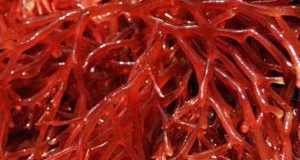Review Overview
Evidense basis
Readability to laypersons
Importance in wellness
Maintaining a slightly alkaline pH is key to preventing disease
The human body is an indivisible, integrated organism, not a collection of various unrelated parts. In this vein, there are various mechanisms in your body that work together to maintain a proper pH balance throughout your body.
The acidity or alkalinity of a substance is measured using pH. The pH scale runs from 0 to 14, with 0 being the most acidic, 14 being the most alkaline, and 7 being neutral. To survive, our bodies must maintain the pH very close to 7.4, which is just on the alkaline side of neutral. If your body’s pH varies too much from this ideal, it becomes difficult for various enzymes to function properly.
Maintaining this slightly alkaline state is a constant challenge, primarily because of the acid-forming functions that take place within the body, and the overabundance of acid-producing foods we consume.
The idea that various foods influence the pH of the body isn’t new. In fact, as far back as the early 1900s, numerous doctors began studying the pH-altering effects of different foods. They found that while a few foods were “neutral” in their effects, most foods were either “alkaline-producing” or “acid-producing.” They also found that simply changing the diet could change the pH of the body. Not surprisingly, bringing the body’s pH closer to the normal range helped patients get rid of many of their health complaints.
Overacidity has even been linked to the formation of cancer, heart disease, diabetes, and osteoporosis.
Is Your Body Too Acidic?
There are two ways to determine whether your body is too acidic. You can go by co-occurring symptoms, or you can do a simple at-home test.
Symptoms of Over-Acidity
- Constant fatigue
- Easily running out of breath
- Frequent sighing
- Muscle pain or cramping after walking short distances
- Often feeling like you can’t get enough air
I’ve also found that when people are very acidic, their tissue levels of oxygen are so low that they have difficulty holding their breath for more than 20 seconds. The length of time you can hold your breath is one technique you can use to document the difference that occurs after adapting a more alkaline-producing diet.
At-Home Test for Over-Acidity
If you can’t tell if you’re too acidic using these criteria, there’s a simple and fairly accurate way to test yourself. Just check the pH of your saliva using pH strips (Hydrogen ion test strips) or paper. Saliva closely parallels the blood when it comes to pH. Compare your results to these benchmarks:
- Normal blood pH = 7.4
- Normal saliva pH = 6.5 to 7.0
If your saliva pH consistently falls below 6.5, you are acidic. If it consistently reads above 7.0, you could be too alkaline.
How to Correct Your Body’s pH Balance
Eating a diet of 75–80 percent alkaline-forming foods—and minimal in acid-forming foods—is the best way to maintain a slightly alkaline pH in your body. (See a list of acid and alkaline foods below).
Although switching to a more alkaline diet will benefit most everyone, there is a small percentage of the population whose bodies are actually too alkaline. The few individuals who have this condition usually suffer from calcium deposits.
Calcium forms when the surrounding environment is alkaline. This results in symptoms of migrating nerve and joint pain. Insomnia can also be a problem, and it is often associated with early morning stiffness. These individuals wake up stiff, but the stiffness quickly improves as muscle activity produces lactic acid. Lactic acid helps neutralize the buildup of alkaline compounds and bring the body’s pH back into balance.
David Williams
Remember – both acid and alkaline foods are necessary for good health. Balance is the “take-away” message for optimizing health.
Acid-Forming Foods
- All meat (beef, pork, lamb, and chicken) and fish
- Rice (white, brown, or basmati)
- Cornmeal, oats, rye, spelt, wheat, bran
- Popcorn
- Pastas
- Breads and most other grain products, such as cereals (hot or cold), crackers, and pastries
- The following beans (unless sprouted, in which case they become alkaline-producing): pinto, navy, mung, lentils, black, garbanzo, red, white, adzuki, and broad
- Cheese (Parmesan and sharper cheeses are the worst)
- Sunflower and pumpkin seeds
- Wheat germ
- The following nuts: walnuts, pecans, cashews, dried coconut (fresh coconut is alkaline-producing), pistachios, macadamias, filberts, Brazil nuts, and peanuts
- Colas
- Alcoholic drinks
- Coffee and other caffeinated drinks
- Sweetened yogurt
- Most forms of sweeteners (artificial sweeteners, cane sugar, beet sugar, barley syrup, processed honey, maple syrup, molasses, fructose, lactose)
- Refined table salt
- Soy sauce
- Mustard (dried powder and processed)
- Ketchup (unless natural and homemade)
- Mayonnaise (unless natural and homemade)
- White vinegar (apple cider and sweet brown rice vinegar are less acid-producing and preferred)
- Nutmeg
- Tobacco
- Practically all drugs
Alkalinizing Foods
- Practically all vegetables
- Practically all fruits, except blueberries, plums, prunes, and cranberries. Even citrus fruits such as lemons, which we think of as being acidic, are alkaline-producing in the body. They are rich in organic salts, like citrates, which are converted into bicarbonates.
- Beans such as string, soy, lima, green, and snap
- Peas
- Potatoes
- Arrowroot flour
- Grains such as flax, millet, quinoa, and amaranth
- Nuts like almonds, pignoli, fresh coconut, and chestnuts
- Sprouted seeds of alfalfa, radish, and chia
- Unsprouted sesame
- Fresh unsalted butter
- Milk, cream, and goat’s milk
- Eggs
- Whey
- Plain yogurt
- Sweeteners like raw, unpasteurized honey, dried sugar cane juice (Sucanat), brown rice syrup
- Fruit juices
- All vegetable juices
- Most herbal teas
- Garlic
- Cayenne pepper
- Gelatin
- Most herbs
- Miso
- Most vegetable and unprocessed sea salt
- Most all spices
- Vanilla extract
- Brewer’s yeast
- Most unprocessed, cold-pressed oils are neutral or alkaline-forming. (Even margarine seems to be neutral, but I don’t recommend this “liquid plastic.”)
If acidic, try juicing. Drinking your own fresh vegetable juices you create from using vegetables and a juicer on a daily basis will jumpstart the process of alkalizing your body. This is why many people feel so good after they begin a juicing program.
Note: Due to the problems people have with blood sugar, use vegetable juices and not fruit juices.
 Vitamin Agent The Health & Naturalistic Source
Vitamin Agent The Health & Naturalistic Source





